Jeff Bezos’ Money Timeline — See the Billionaire’s Financial Milestones Through the Years
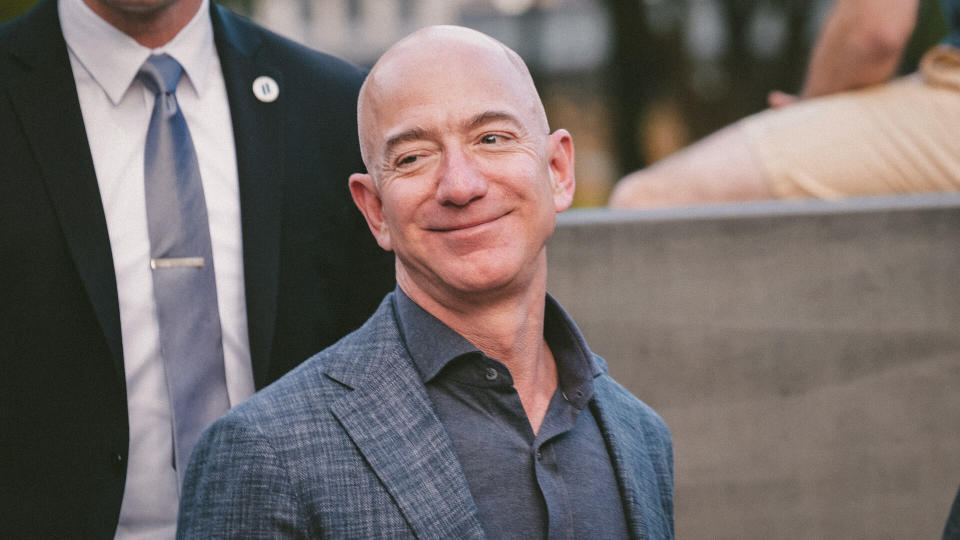
Jeff Bezos is one of the most recognized entrepreneurs in the world. His climb from starting an online bookstore out of his garage to running a global retail empire that earned him the title of the world’s richest person has captivated millions.
Bezos didn’t become a billionaire by accident. He made many smart business choices that got him to the top.
Here are 14 significant moments in his money timeline:
Check Out: 10 Valuable Stocks That Could Be the Next Apple or Amazon
Read Next: 7 Reasons You Should Consider a Financial Advisor — Even If You’re Not Wealthy
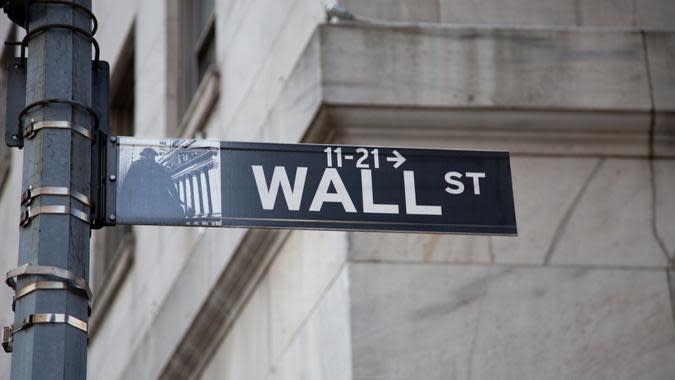
Vice President for D.E. Shaw & Co.
After graduating from Princeton in 1986 with degrees in electrical engineering and computer science, Bezos worked his way up Wall Street. He took a job with the new hedge fund D.E. Shaw & Co. and became a vice president in four years.
In a Frontline PBS interview, Andreas Weigend, former chief scientist at Amazon, explains that D.E. Shaw revolutionized Wall Street by introducing data. Bezos leaned into this, believing that companies using data were more likely to succeed.
During his tenure, David Shaw, founder of D. E. Shaw & Co., tasked Bezos with investigating new business possibilities, including Internet use, then called the World Wide Web. Bezos found that web use was growing by 2300% per year, which led him to search for a business plan that would align with that rapid growth.
Discover More: I’m a Self-Made Millionaire: 5 Stocks You Shouldn’t Sell
Find Out: 3 Genius Things All Wealthy People Do With Their Money
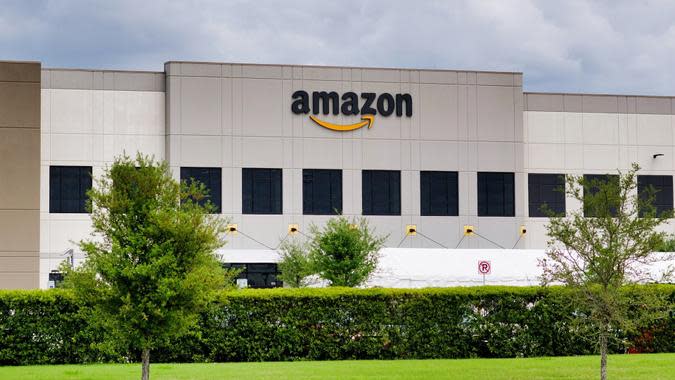
Founds Amazon.com
In 1994, Bezos and his wife, Mackenzie, moved to Seattle, where he founded Amazon.com with a $10,000 personal investment along with $84,000 in interest-free loans over the next 18 months. [3] He decided to sell books online. He chose books because there are more items in the book category than any other by a wide margin. Selling books allowed him to build an online store with more available items than any brick-and-mortar store had. Because of this large selection, Bezos named his company after the world’s largest river, the Amazon.
Amazon.com officially opened on July 16, 1995, and quickly grew successful. In the first month, Amazon sold books to states across the U.S. and 45 foreign countries without using paid promotion. By the end of the second month, its sales reached $20,000 a week.
Amazon’s business model had two major advantages over other businesses. First was its vast selection. Bezos is on record saying that if someone printed out Amazon’s entire catalog on paper, it would equate to the size of seven New York City phone books. The second advantage was its new convenience, with products shipped right to the customer’s door.
Trending Now: Here’s How Much a $1,000 Investment in Ford Stock 10 Years Ago Would Be Worth Today

Amazon Goes Public
On May 15, 1997, Amazon went public with a valuation of $300 million. The company appeared on the NASDAQ stock exchange under the ticker symbol AMZN. The initial public offering (IPO) was $18 per share and grew to $23.50 by the close. The IPO gave Amazon a market valuation of about $560 million. However, Amazon wasn’t yet a profitable business.
In a letter to shareholders after Amazon went public, Bezos explained that the business strategy was to forego profits in the short term to take market share. This meant that Amazon would lose money to put companies that couldn’t compete out of business.
Another advantage Bezos took advantage of to quickly grow and monopolize the book-selling industry was taxes. Brick-and-mortar businesses were required to charge sales tax for all purchases. However, online businesses didn’t need to charge sales tax, which saved customers money. As Amazon began expanding into a retailer beyond books, the lack of sales tax continued to be a great advantage.
Bezos further expanded his empire by turning Amazon into a retail platform where thousands of other brick-and-mortar businesses could sell their products online. This move brought in big-name stores as well as small entrepreneurs, resulting in millions of dollars in profit for Amazon.
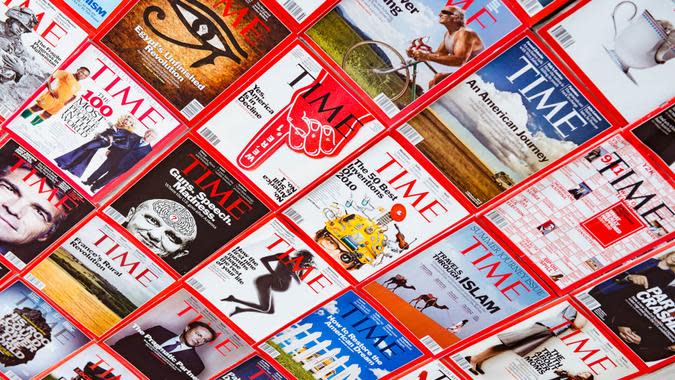
Time Magazine’s Person of the Year
With Amazon’s expansion into retail beyond books, the world began to take notice. On Dec. 27, 1999, Bezos graced the cover of Time magazine as “Person of the Year.”
At 35 years old, he was the fourth youngest person to receive the honor after Charles Lindbergh, Martin Luther King Jr. and Queen Elizabeth II. His Time article referenced how he used his genius to replace old-fashioned stores with a new style of centralized sales and shipping centers guided by the Internet.
In 1999, he had already amassed a net worth of $7.8 billion and ranked #18 on the Forbes list of richest Americans.
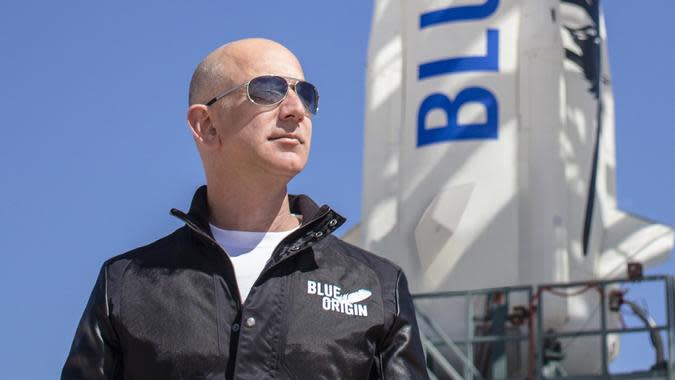
Founds Blue Origin
In 2000, Bezos founded a new company with very different goals than Amazon.com. While in high school, Bezos said in a newspaper article, “The earth is finite, and if the world economy and population is to keep expanding, space is the only way to go.”
With this in mind, he created Blue Origin. The company, named after the planet Earth, manufactures space vehicles and guided missiles and embarks on space exploration. To get the company started, Bezos funded the space company with at least $5.5 billion from his own pockets.
On July 20, 2021, Blue Origin launched its first commercial flight to space and back. The launch vehicle, New Shephard, completed a 10-minute flight into space. It carried four civilian passengers, including Bezos and his brother Mark. The first ticket on New Shephard received over 7,500 bids from 159 different countries. The seat sold for $28 million.
Since that launch, Blue Origin has joined SpaceX and United Launch Alliance (ULA) to compete for a rocket contract in the Pentagon’s $5.6 billion National Security Space Launch (NSSL) program. It’s raised $500 million in funding and has nearly 11,000 employees.
Read More: 3 Types of Investments Predicted To Plummet in Value in Summer 2024
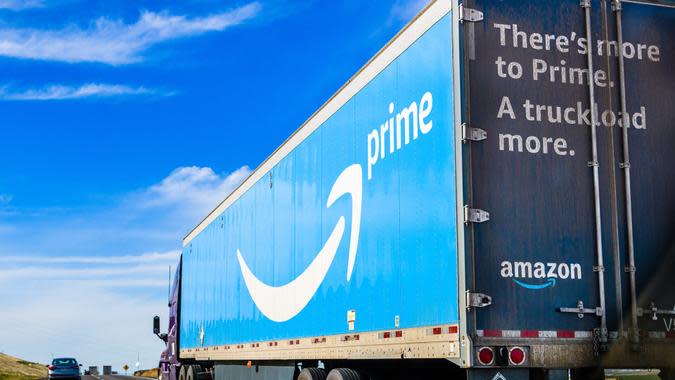
Starts Amazon Prime
In February 2005, Bezos made a risky decision to start the now-popular membership service Amazon Prime. Originally members paid $79 annually for free two-day shipping on eligible purchases in the U.S. This membership for free shipping started out as a significant expense for Amazon. However, Amazon Prime proved profitable as members began to order through Amazon over other retailers because of the free shipping.
Over the years, Amazon has added more features to its membership, including Prime Video, Prime Reading and Amazon Photos, as well as various discounts and deals. Amazon Prime also adjusted its shipping time to same-day or one-day delivery. In 2015, Amazon even created a shopping holiday based around the subscription service called Amazon Prime Day. Along with these added benefits, the price has also risen to $14.99 per month or $139 per year.
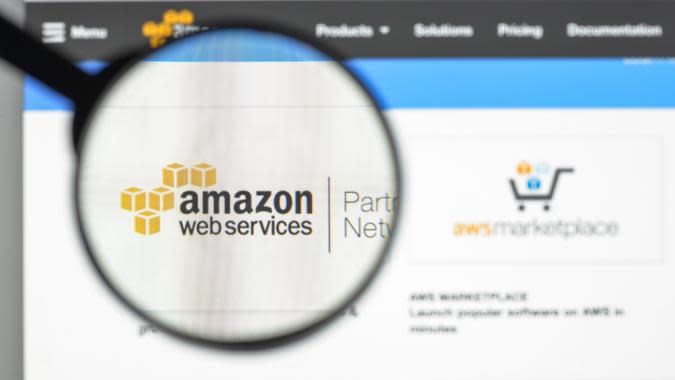
Initiates Amazon Web Services
Amazon made another significant expansion in 2006. It launched the cloud computing business Amazon Web Services (AWS). Customers use AWS to power their infrastructure and applications to lower business costs and improve innovation. It offers pay-as-you-go pricing for technology services that members can use to improve their applications, like computing, storage, databases, machine learning and artificial intelligence (AI).
AWS was a way for Bezos to diversify Amazon’s business and create new revenue streams from independent retail operations, and it has proven effective. In the first quarter of 2024, AWS was responsible for $25 billion in revenue, exceeding the expectations of $24.5 billion.
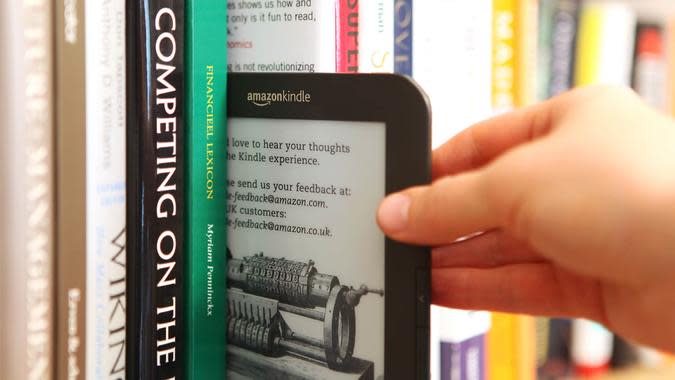
Releases First Kindle
In the mid 2000’s, Amazon continued to break barriers and innovate. Bezos changed the publishing industry forever with the release of the Amazon Kindle on Nov. 19, 2007. The first Kindle retailed for $400. While e-book readers already existed, the Kindle would grow to be the device that changed the industry.
Today, the Amazon Kindle comes in various shapes and sizes and has all sorts of capabilities. Kindles have up to 64 GB in storage, writing capability with a battery free pen, internet connectivity and weeks of battery life. Consumers can purchase a Kindle for under $100 now.
To further enhance the value of Amazon’s Kindle, Amazon rolled out the Kindle Unlimited subscription service in 2014. This allows readers to access over 4 million titles digitally through their Kindle, browse from included magazine subscriptions and listen to thousands of audiobooks. The Amazon Kindle and Kindle Unlimited continue to grow the value of Amazon today.
Explore More: 10 Things You Should Do When Your Child’s 529 Account Reaches $20,000
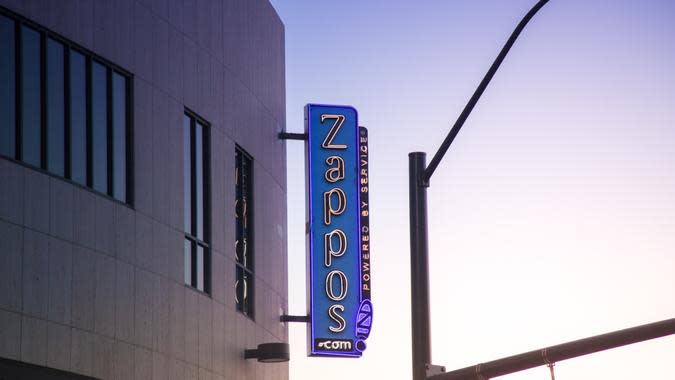
Acquires Zappos
Zappos.com, an online shoe and clothing retailer, got Bezos’s attention in 2009. Amazon purchased it for about 10 million shares of Amazon common stock, averaging $807 million over the next 45 trading days. Employees received an additional $40 million worth of cash and restricted stock units.
Zappos didn’t merge with Amazon but instead ran independently. Zappos CEO Tony Hsieh equated the matter to continuing on with the same business and culture but switching the shareholders and board of directors.
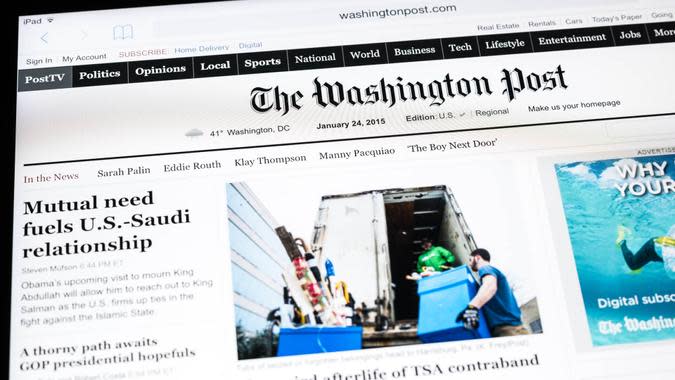
Buys The Washington Post
In 2013, Bezos made a big move and purchased the Washington Post newspaper. It had belonged to the Graham family for 80 years before Bezos bought it for $250 million. Before the sale, the entire newspaper industry had been struggling to adapt to consumers’ move toward the internet.
Within three years of the purchase, the newspaper had become profitable and doubled its web traffic. Bezos turned the failing newspaper away from an outlet focused on print and moved it into the digital age. By 2017, the newspaper’s digital-only subscribers had exceeded one million. Bezos has publicly stated that when he is 90 years old, he will be most proud of helping the Washington Post through such a rough time and making it a successful newspaper once again.
However, leading the newspaper company has proven challenging, as it’s been hit with recent setbacks such as losing $77 million in 2023, a sharp decline in website traffic, a newsroom revolt, and the sudden departure of its new executive editor.
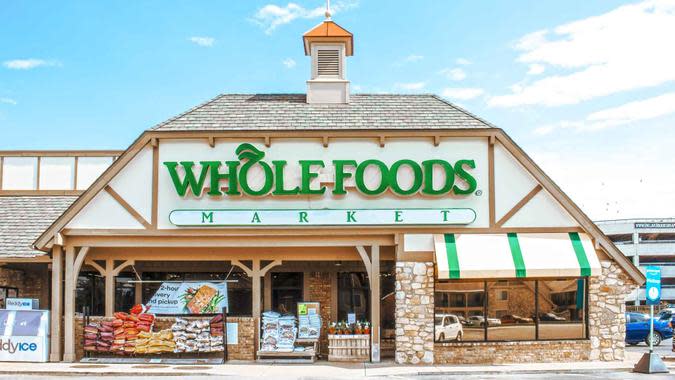
Acquires Whole Foods Market
Bezos made another unexpected move in 2017 by acquiring Whole Foods Market and stepping into the brick-and-mortar space. The high-end supermarket chain, which features organic and natural products, sold for $13.7 billion, making it one of the largest Amazon acquisitions.
This allowed Amazon to bolster its Amazon Fresh grocery service, which delivers food products ordered online to most U.S. cities.
For You: In 5 Years, These 2 Stocks Will Be More Valuable Than Apple
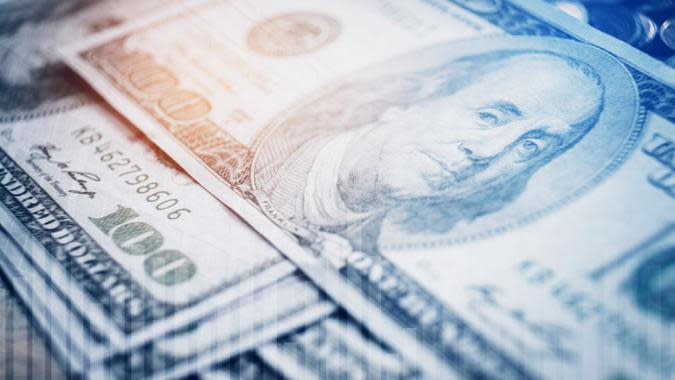
Becomes the Richest Person in the World
In 2018, Forbes released the 32nd Annual World Billionaires List, and Bill Gates was not at the top. For the first time, Bezos was ranked as the world’s richest person. His net worth grew by $24 billion during the year, amounting to $123 billion at his peak.
Meanwhile, Gates was worth only $90 billion.
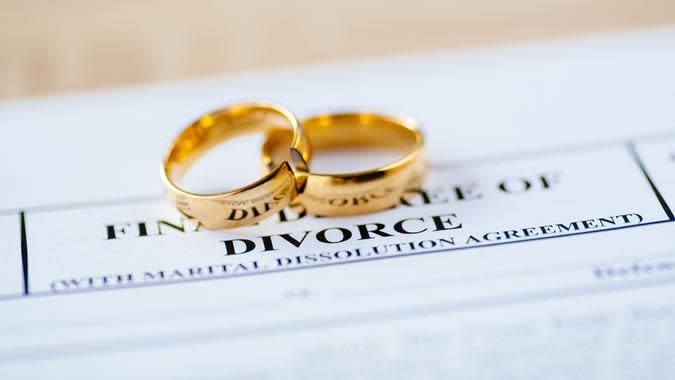
Divorces Mackenzie Bezos
In 2019, Bezos and his wife, Mackenzie, filed for divorce after 25 years of marriage. At the time of the divorce, Bezos was the richest person in the world, with an estimated net worth of $118 billion.The divorce settlement was record-breaking as Mackenzie received a 4% stake in Amazon, which amounts to a value of $35.6 billion.
Although other financial details of the divorce weren’t released, Bezos kept ownership of The Washington Post and Blue Origin. Bezos’s ex-wife, now referred to as Mackenzie Scott, is the 35th most wealthy person in the world.
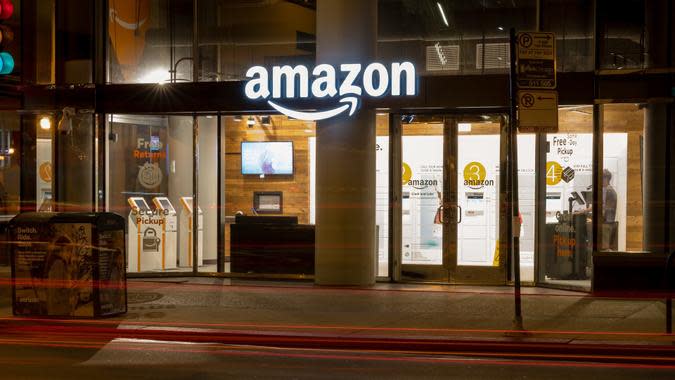
Steps Down as CEO of Amazon
Exactly 27 years after founding Amazon, Bezos stepped down from the CEO position. It was a sentimental date that Bezos chose himself. He will remain a prominent voice for Amazon, transitioning to executive chairman of the board. He hopes to devote more time to other projects, particularly The Washington Post and Blue Origin.
With all of the ups and downs of Bezos’s business ventures and personal life, he has constantly found ways to succeed. He is currently at the top of the list of richest people in the world, along with Elon Musk. They both have a net worth of $216 billion.
More From GOBankingRates
I'm a Real Estate Agent: These 5 Florida Cities Are Becoming Unaffordable
These 10 Used Cars Will Last Longer Than an Average New Vehicle
6 Things to Try This Week if You're Behind on Your Savings Goals
4 Reasons Retired Women Need More Money Than Men -- And What To Do About it
This article originally appeared on GOBankingRates.com: Jeff Bezos’ Money Timeline — See the Billionaire’s Financial Milestones Through the Years

 Yahoo Finance
Yahoo Finance 